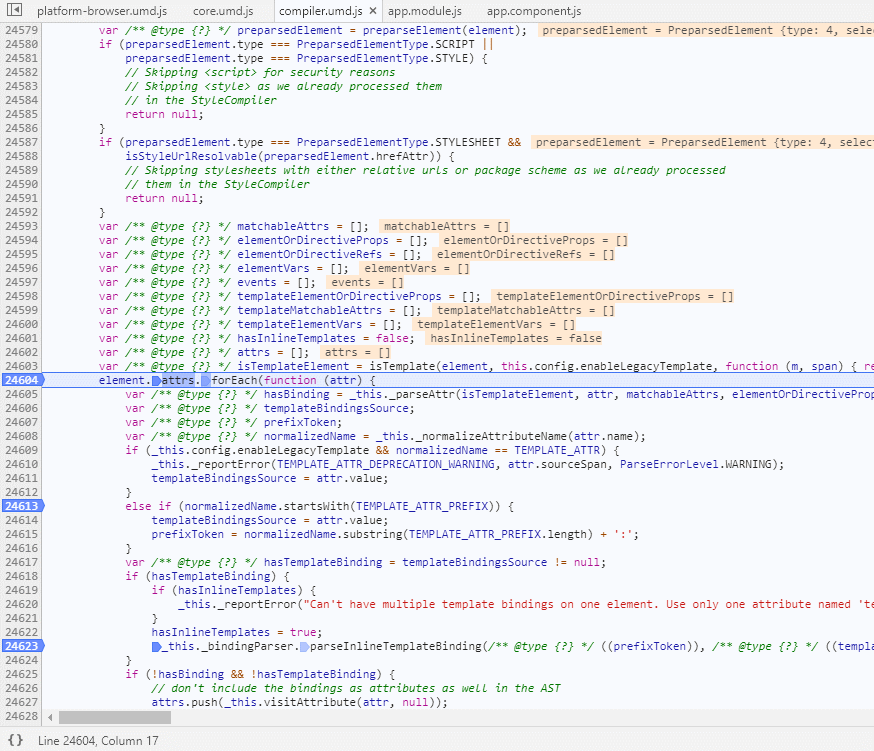I am trying to understand where is the "as local-var" optional behavior of ngIf defined, e.g.:
*ngIf="user$ | async as user"
Tried looking into obvious places in source, like https://github.com/angular/angular/blob/master/packages/common/src/directives/ng_if.ts
But nothing in the code, only docs.
Does anyone know where in the code this magic is happening ?
Yeah, it's magic that happens during template compilation.
The template below
<div *ngIf="user$ | async as user"></div>
is just sugar for:
<ng-template [ngIf]="user$ | async" let-user="ngIf">
<div></div>
</ng-template>
So the answer: the following string passes value to this variable:
this._context.$implicit = this._context.ngIf = condition;
^^^^^^^^^^^^^
https://github.com/angular/angular/blob/master/packages/common/src/directives/ng_if.ts#L115
For example we can create structural directive ngVar:
@Directive({
selector: '[ngVar]',
})
export class VarDirective {
@Input()
set ngVar(context: any) {
this.context.$implicit = this.context.ngVar = context;
^^^^^^^^^^^^^^^^
this.updateView();
}
context: any = {};
constructor(private vcRef: ViewContainerRef, private templateRef: TemplateRef<any>) {}
updateView() {
this.vcRef.clear();
this.vcRef.createEmbeddedView(this.templateRef, this.context);
}
}
and use it either like:
<ng-template [ngVar]="true" let-x="ngVar"><div>{{x}}</div></ng-template>
or
<div *ngVar="true as x">{{x}}</div>
If you want to understand where is the magic in compiler then let's take a look at an example:
<div *ngVar="true as x"></div>
1) Angular compiler tokenizes this string like:
<div *ngVar="true as x"></div>
(1) (2) (3) (4) (5)
(1) - TAG_OPEN_START
(2) - ATTR_NAME
(3) - ATTR_VALUE
(4) - TAG_OPEN_END
(5) - TAG_CLOSE
2) HtmlParser creates element's tree based on these tokens:
Element div
attrs: name: *ngIf
value: true as x
3) TemplateParser builds AST(abstract syntax node) tree. To do this TemplateParser uses special visitor called TemplateParseVisitor
This visitor goes through all tree received in the previous step. And let's look at how it works when compiler comes to visitElement:

So as we can see any template with structural directive like:
*dir="someValue as someVar"
represents the following:
<ng-template [dir]="someValue" let-someVar="dir">
See also:
If you love us? You can donate to us via Paypal or buy me a coffee so we can maintain and grow! Thank you!
Donate Us With